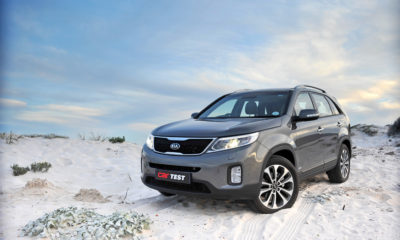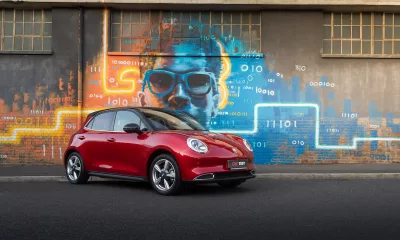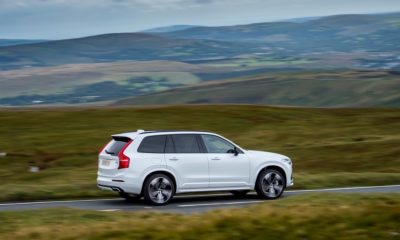The Kia Sorento has been a popular fixture on the South African market since 2009 and, given the introduction of the all-new Santa Fe earlier this year, our interests turned to the recent detail upgrade of the former medium-sized crossover, which is tested here in seven-seater, all-wheel-drive configuration. Updates to the Sorento’s exterior detailing are extensive: at the front, there are a redesigned grille and bumper, daytime running LEDs above the xenon headlamps and dynamic cornering lights. The rear section gains an enlarged rear screen and revamped LED combination taillamp clusters, all of which lend the Sorento a sportier and more refined look without altering the overall profile of the vehicle.
Inside, the leather-trimmed space has been upgraded by the addition of soft-touch finishes, satin chrome highlights and a more sophisticated infotainment interface in the facia, which includes a reverse-camera display. The driver’s seat not only offers six-way electric adjustment and a memory function, but both front pews are also heated and ventilated. While we’re on the topic of the front seats, a number of testers found that they don’t dip low enough, resulting in a number of bean poles’ pates gently touching the rooflining. It’s a problem we didn’t encounter in the Sante Fe.
In addition to a stop/start button and keyless entry, the well-sized multifunction steering wheel offers toggles for the Bluetooth hands- free connection, audio and cruise- control functions.
The front section of the panoramic sunroof tilts and slides, and the one-piece electric roller blind allows the level of ambient cabin lighting to be adjusted to taste. The second row of seats can split 60:40 and the third 50:50, but through the implementation of a revised rear-suspension design with the facelift, Kia has freed up slightly more legroom for rear passengers by lowering the floor, which is also 10 mm closer to the ground by virtue of a ride-height adjustment.
While specification upgrades are all-important in a highly competitive market, we found the Sorento’s under- the-skin improvements most noteworthy. The torsional rigidity of the Kia’s bodyshell has been increased by 18 per cent through strategic strengthening and new, vibration-damping subframe mountings were adopted. The AWD model includes a self-levelling rear-suspension configuration and an adaptable FlexSteer function (with comfort, normal and sport modes) on the motor-driven power-steering setup.
As a result, the Sorento’s pliant ride quality is even more road-biased than before. The steering is quicker and more accurate in its action, even if the feel through the wheel remains lifeless. And should the Korean be tasked with traversing dirt roads or mildly challenging off-road courses, the AWD drivetrain, which sends all the torque to the front wheels in normal city driving, will direct up to 50 per cent of the drive to the rear wheels as required. Should off-road conditions get trickier, the user-engagable lock mode will limit the torque split 50:50 between the front and rear axles at speeds of up to 40 km/h.
Under general driving conditions, the Sorento’s on-road refinement is much improved. The powertrain remains largely unchanged apart from the adoption of a new exhaust-gas-recirculation (EGR) system for the turbodiesel motor and a higher top gear ratio for improved fuel consumption. However, by introducing a revised dashboard structure, lining the engine-bay bulkhead with a three-layer noise-lowering material and fitting a new sound insulator to the trans- mission tunnel, engine clatter and vibration are greatly reduced.
In terms of its safety specification, Kia has included Isofix child-seat anchors and dual front, side and curtain airbags. Active headrests reduce the chance of whiplash, while ABS with EBD and brake assist, cornering-brake control, electronic stability and traction control, hill-start assist and roll- over protection systems are among the standard safety systems.
Test Summary
By positioning itself as a medium-sized crossover in a market that spans the top end of the generally more rudimentary body-on-chassis (bakkie-based) SUVs and the premi- um-badged unibody off-road vehicles, the Sorento – and Hyundai’s Sante Fe – represent excellent specification and people-carrying versatility per rand. This AWD model is Kia’s ultimate passenger-vehicle offering in the local market, but unless four-wheel drive and seven-seats are non-negotiable needs, we suggest the two-wheel-drive, five-seater model to be an even better buy.















